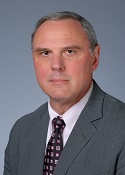Year in Review: Payment Fights, Wearables, Burnout Defined Cardiology Practice in 2019
Teamwork, diversity, and inclusion were also major themes, amid major clinical trial results poised to shift daily practice.

Shifts from small to seismic rocked the practice of cardiology in 2019, impacting physicians across subspecialties.
What’s fortunate—and perhaps instrumental in these changes—is that “it was a really good year [for professional] societies being united” in the face of uncertainty or obstacles, Richard Kovacs, MD (Indiana University School of Medicine, Indianapolis), president of the American College of Cardiology (ACC), told TCTMD.
After the infamous Katsanos meta-analysis showed signals of increased mortality with paclitaxel-based devices in PAD late last year, for instance, various groups including VIVA Physicians, the Society for Vascular Surgery, and others helped to gather data and to advise the US Food and Drug Administration on the issue, Kovacs pointed out.
Physicians across specialties—from the ACC as well as the American Society of Nuclear Cardiology, the American College of Nuclear Medicine, the Cardiology Advocacy Alliance, and the Society of Nuclear Medicine and Molecular Imaging—also united in drawing attention to “quite drastic” proposed cuts in Medicare reimbursement for cardiac positron emission tomography imaging, he noted. These payment decreases were not finalized.
In the realm of public health, Kovacs said, the cardiovascular community and the medical field as a whole have taken on an advocacy role to curb the use of e-cigarettes, particularly the flavored varieties that might entice young people to begin smoking. In November 2015, more than 50 medical and public health groups co-signed a letter calling for stronger regulation of these nicotine products. This is “something we can really come together on for the protection of patients,” not only adults currently under cardiologists’ care but also children who might be future smokers, he commented.
From Wearable Tech to TAVR Approvals
Evolutions in cardiology went beyond policy: throughout 2019, there were developments that will have a direct impact on how physicians interact with patients, Kovacs said, with “a little bit of something for everybody’s practice.”
Results from the Apple Heart Study, released at the ACC Scientific Session in March, “showed us the power of wearable devices” by suggesting that a smartwatch could be used to detect A-fib, he pointed out. That experience also highlighted the potential for “running a trial virtually without patient visits to coordinating centers. It was really an eye-opener in terms of where we’re going with tech.”
Also at the ACC meeting, positive data from two randomized trials cemented a role for TAVR in low-risk patients, leading to the expanded FDA approval for the devices in August.

Meanwhile, Kovacs added, DAPA-HF promises to shake up the heart failure field by suggesting that a drug developed for diabetes can also help prevent worsening heart failure events and CV death among patients with reduced ejection fraction. Full results of that trial were released in September at the European Society of Cardiology 2019 Congress, with additional details on nondiabetic patients provided at the American Heart Association (AHA) 2019 Scientific Sessions.
Most recently, there was much buzz over the ISCHEMIA trial at the AHA meeting. Cardiologists may be adapting their treatment decisions or simply rethinking how they view stable ischemic heart disease, Kovacs commented.
Workplace Concerns and Relief
Despite all the advances in cardiovascular care, there are signs that cardiologists are not experiencing the same positive progress in their day-to-day lives.
Clinician burnout remains a big concern, as evidenced by the latest ACC survey on the topic, Kovacs noted. More than a quarter of the US cardiologists (26.8%) who replied to the survey reported feeling burned out and half of the remainder said they felt stressed.
For Kovacs, another noteworthy finding is that midcareer cardiologists with 8 to 21 years of practice were more likely to report burnout (39%) than were fellows in training (10%), early-career cardiologists (23%), and late-career cardiologists (28%). “We focus on young [cardiologists], we focus on senior clinicians, but I think this refocuses us on the midcareer physicians as well,” he emphasized.
A newly launched portal dedicated to physician well-being can be found on the ACC’s website.
Kovacs also highlighted diversity and inclusion as “a major push for the ACC” in 2019. To advance these values, this September the organization issued its first-ever health policy statement devoted to workplace issues in cardiology. The document sets standards for compensation and professional growth, stressing that both “are critical to the health and future of the cardiovascular workforce.”
Caitlin E. Cox is News Editor of TCTMD and Associate Director, Editorial Content at the Cardiovascular Research Foundation. She produces the…
Read Full Bio

Comments